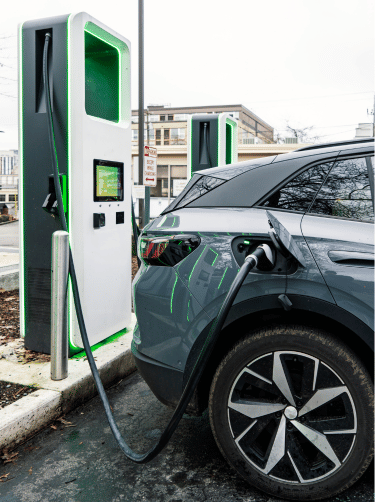Home / U.S. Climate Alliance Applauds U.S. EPA’s Final Rule to Cut Emissions from Light- and Medium-Duty Vehicles

WASHINGTON, D.C. — The U.S. Climate Alliance — a bipartisan coalition of governors representing approximately 60 percent of the U.S. economy and 55 percent of the U.S. population — issued the following statement in response to the final rule released today by the U.S. Environmental Protection Agency (EPA) establishing new, more protective federal standards for greenhouse gas emissions and criteria pollutant emissions for light- and medium-duty vehicles, for model years 2027 and later:
“The Biden administration and the Alliance’s states and territories are propelling America toward a future where our air is cleaner, our communities are healthier, and our economy is booming,” said U.S. Climate Alliance Executive Director Casey Katims. “It’s critical we stay the course, and we welcome EPA’s historic action to rapidly curb harmful carbon pollution from passenger cars and trucks.”
Today’s action follows letters from the Alliance, written last February and June, to both President Biden and EPA expressing support for finalizing strengthened vehicle emissions standards.
Last month, the Alliance also encouraged EPA’s timely approval of California’s waiver request under the Clean Air Act for the Advanced Clean Cars II regulation, which empowers states to further accelerate the adoption of zero-emission light-duty vehicles. A decision from EPA is pending.
Launched in 2017 by the governors of Washington, New York, and California to help fill the void left by the U.S. federal government’s withdrawal from the Paris Agreement, the Alliance has grown to include 24 governors from across the U.S. representing approximately 60 percent of the U.S. economy and 55 percent of the U.S. population. Governors in the Alliance have pledged to collectively reduce net greenhouse gas emissions by at least 26-28 percent by 2025, 50-52 percent by 2030, and 61-66 percent by 2035, all below 2005 levels, and collectively achieve overall net-zero greenhouse gas emissions as soon as practicable, and no later than 2050.
The Alliance’s states and territories continue to advance innovative and impactful climate solutions to grow the economy, create jobs, and protect public health, and have a long record of action and results. In fact, the latest data shows that as of 2023, the Alliance has reduced its collective net greenhouse gas emissions by 24 percent below 2005 levels, while increasing collective GDP by 34 percent, and is on track to meet its near-term climate goal of reducing collective greenhouse gas emissions 26 percent below 2005 levels by 2025.
###